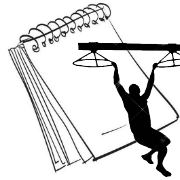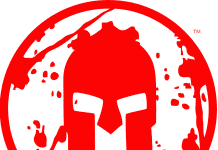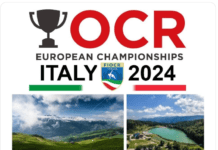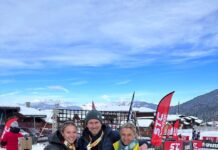In the world of individual sport like OCR it is somewhat unnatural finding a way to create an aggregative event like a team competition, however it is widely required by athletes because at the base of sport there is always fun (although it is interpreted in different forms), and the motto is “the more you are, the more you have fun”
In the case of OCR, there are many ways of “team competition” that can be identified during competitions (we are talking about COMPETITIVE): they are all defined in the same way, although the mechanisms that regulate them are different, often left to the imagination of the organizers and therefore with differente attitudes in management of penalties . For this reason, I will allow myself to invent some definitions in this article (for the purpose of understanding the explanations) to identify the different types.
- Team COMBINE: the team consists of an indefinite number of participants. The team classification is drawn up taking only the best four results of the team members (wristband / time classification), of which at least one is female (yes, it could be four women but it will never be four men!). This is the system that is normally used in the OCR FIOCR championship races.
- Team SINGLE TRACK RELAY: single relay race. Each team is composed of three or four elements (not necessarily mixed), which must follow the same path one at a time, beating the hand at the start / finish to their partner who will leave and will do the same with the next companions. In this type of competition, at the obstacles, the rule of one / three bracelets usually applies, and the ranking is drawn up in order bracelets / time. This type of race was used in the FIOCR Italy Cup in 2018 teams.
- Team RELAY: mixed relay race, and this is the term used for this format in the international OCR races, borrowed by triathlon. The teams are strictly composed of three people, and the course is divided into four sectors: a sector with obstacles of strength (eg dragging or transport), one more for speed (few obstacles but the part of the race is preponderant ), one with obstacles of agility (suspension and rig), and the last with obstacles such as to be technically impossible to overcome in single (collaborative) – the typical super-exploited example in the photos is a wall four meters high. Each component will carry out a distinct sector (among the first three) and the last sector will be done in a collaborative way, where – typically – to pass the “standard” obstacles it is enough for an individual athlete to overcome it to give the “free all” to the others (or other formulas at the discretion of the organizers) while for collaborative obstacles .. well .. it’s clear! The classification is ordered in order of bracelets / time, and this is the mode usually used at the European OCR championships and the OCR world championships, as will be used [PREVIEW] at the European Spartan Race championships 2019 in Alleghe, according to the international rules of the circuit ( to summarize, in the event one of the members made an obstacle, all 3 make 30 burpees (10-10-10) and in the case of heavier obstacles such as Hercules Hoist all three are made together since the weight would be – as described for the 4 meter wall – not feasible individually
- Team COOPERATIVE: it is the most funny mode, because the team must leave together and must arrive together (normally it is composed of four mixed elements). In this type of competition the “standard” obstacles must be faced individually, while for collaborative ones there is the cooperation of all, and the bracelets / time classification applies. This modality was seen at the Shardana International Challenge of 2018 (with teams of four elements) and of 2019 (with teams of two people), and [PREVIEW] will be used in the next Werewolf Run on June 6-7th 2020.
In the NON-COMPETITIVE form, the team competition loses its meaning and the group race is enhanced (Team COOPERATIVES NC): the obstacles are faced individually but it is possible to lend a hand, and this is the format used in races like Spartan Race, Tough mudder and Legion Run, as well as in non-competitive FIOCR races. Normally this is the best form for those approaching the OCR world and has the attitude of “the more we are, the more we have fun”, and therefore it is natural to ask ourselves: is it not possible to transfer this modality in competitive competitions? We asked several race organizers, who actively collaborated on this article (Alberto Lorenzetto of the Verona Force Run team co-organizer of the Force Run race; Stefano Zappa of the White donkeys team, co-organizer of Expo Run; Slava Veaceslav Ansacov of the OCR Heroes team and organizer of the Original Gram), and the answer was tghe same: the resources necessary for these types of races are really huge, and nobody at the moment has the availability to be able to afford it, given that the races “not to team ”occupy all the necessary resources. Only at the Shardana Challenge was this type successfully tested, but with a limited number of teams.
So at the moment, competitive team competitions where “we start together and get together, where we can help each other on obstacles and where the goal is to keep all the bracelets”, you can’t get in Italy. So let’s try to make this sport grow: who knows that one day we will even be able to review such races in our Boot!




